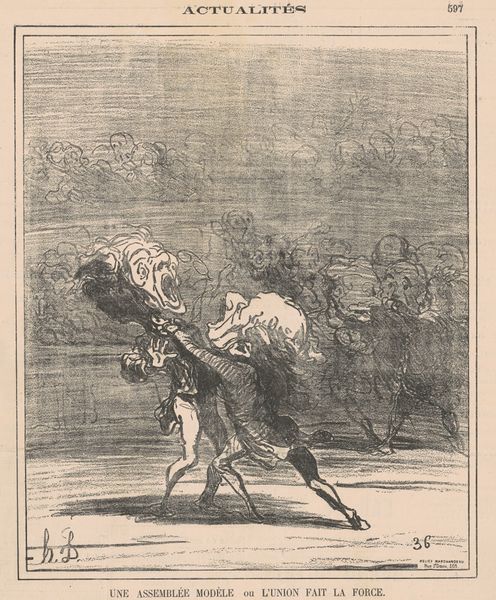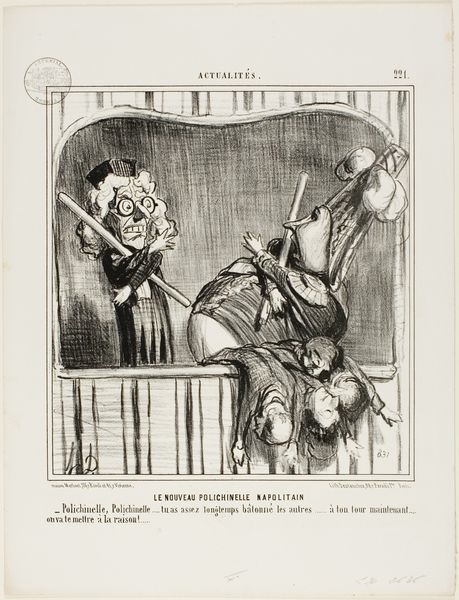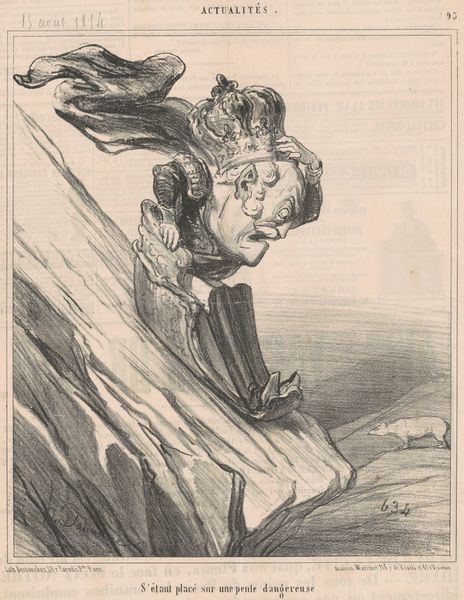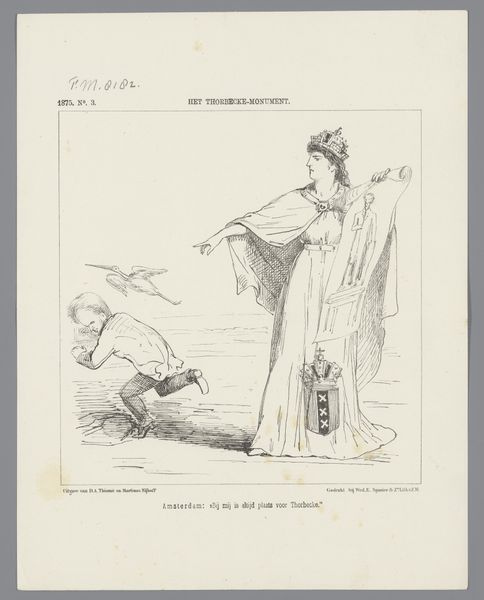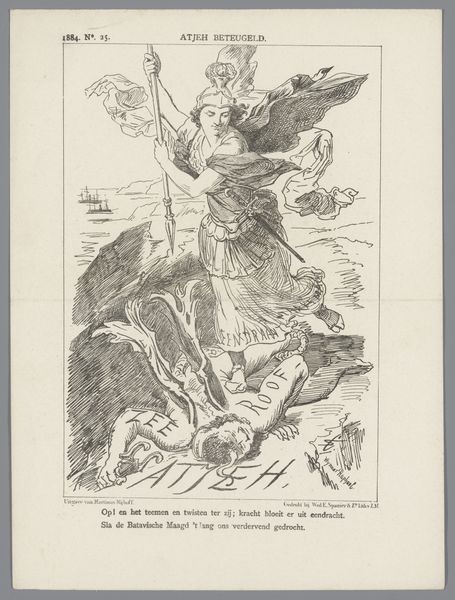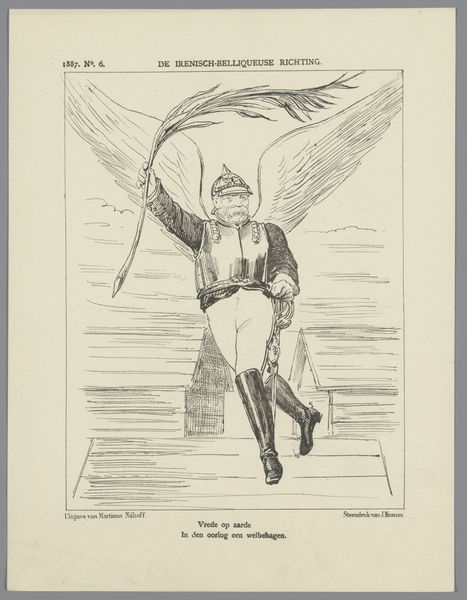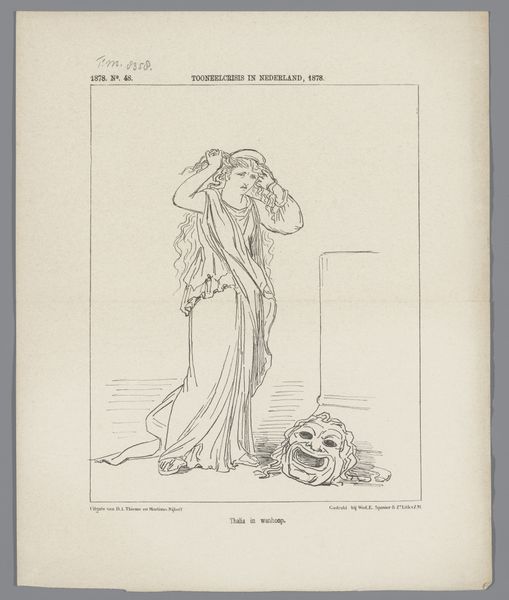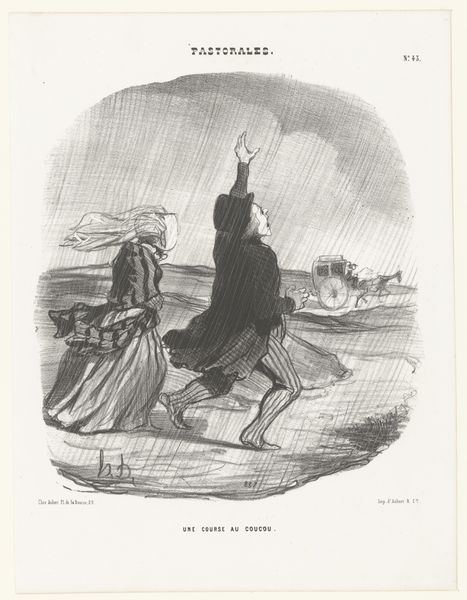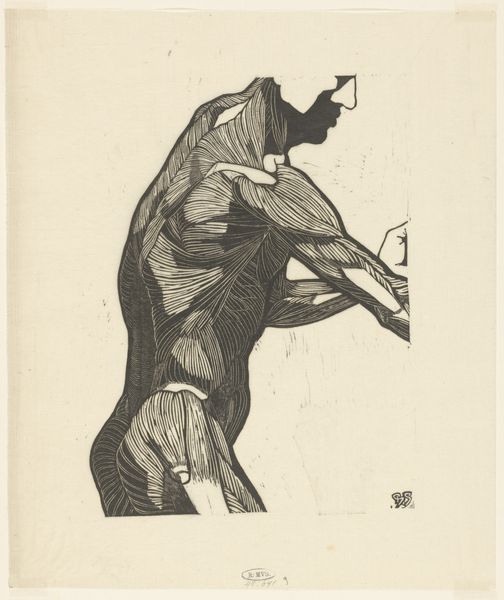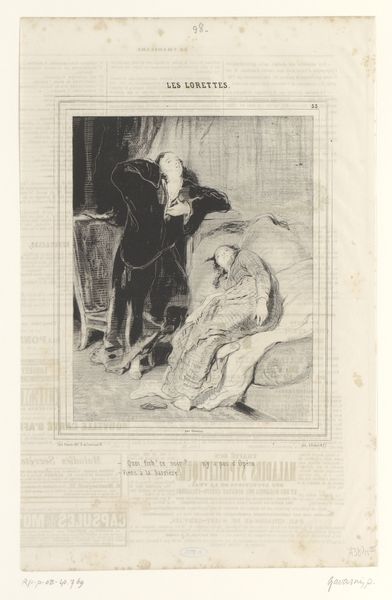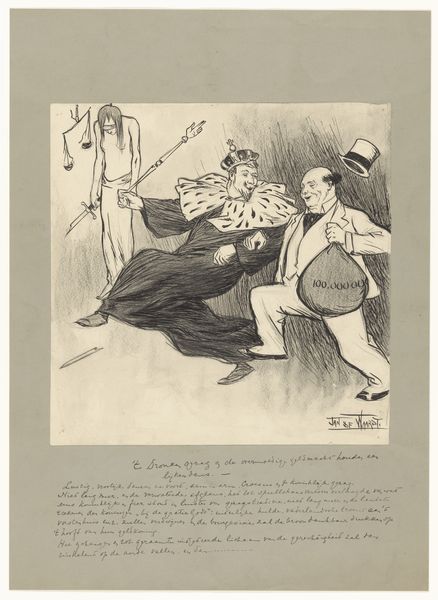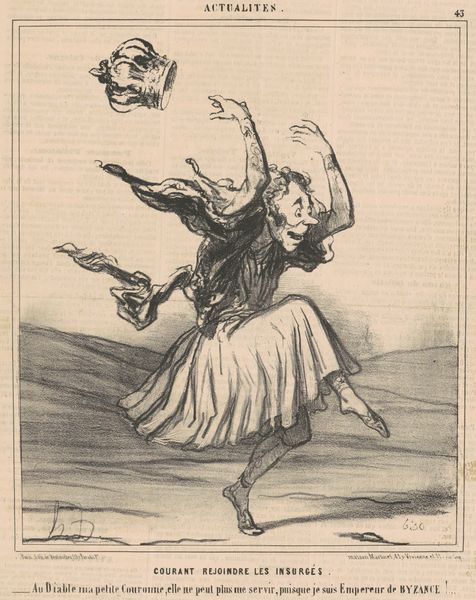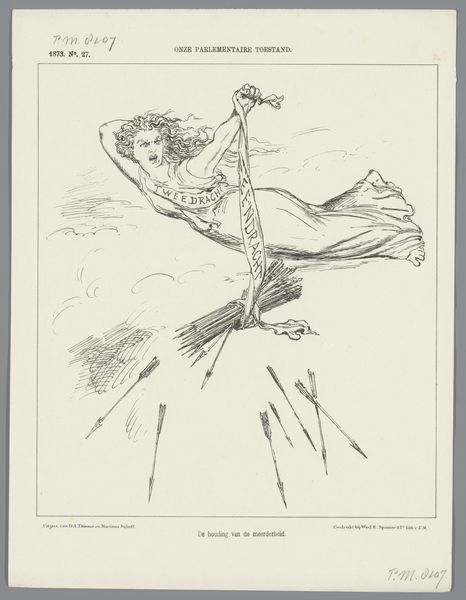
drawing, lithograph, print, paper, ink
#
drawing
#
art-nouveau
#
lithograph
# print
#
caricature
#
paper
#
ink
#
modernism
Dimensions: height 398 mm, width 280 mm
Copyright: Rijks Museum: Open Domain
Curator: This image by Jean-Louis Forain, from 1898, is titled "Caricature of the State as King with a Hat Full of Secret Letters". It is a lithograph printed with ink on paper, and shows the figure of what is presumably the State overwhelmed with secret correspondence. What’s your first take on this image? Editor: Stark and rather ominous, isn’t it? The figure's shrouded almost entirely in darkness. The exaggerated robe, the chaotic scattering of papers. The heavy ink creates such a somber atmosphere. Curator: Yes, it speaks volumes, especially if we consider the socio-political context of France at the time. Forain was working during the Dreyfus Affair, a period of intense political scandal and antisemitism, and this caricature captures the state's obfuscation. The hat overflowing with “secret letters” hints at conspiracies and hidden agendas. Editor: The composition is particularly striking; the darkness seems to emanate from the king, overwhelming everything. I can appreciate the dynamism that Forain creates with the diagonal lines formed by the robe and scattered documents. It emphasizes a sense of imbalance and corruption. Curator: And notice how the figure is perched precariously above a distant skyline, with the caption "Les secrets d'état" written at the bottom? This isolation symbolizes the separation of the state from the public, and underscores the hidden nature of its operations, right? We could explore this piece through Foucault’s concept of power and surveillance, given the secrecy implied. Editor: Agreed. The figure itself lacks individuality; we see only a bald head, bent under the weight. The entire construction emphasizes not a personality, but rather the formal attire as signifiers of royalty. It is almost symbolic how that regal attire smothers him in darkness, making the state itself the problem, not a flawed ruler. Curator: Absolutely. I find it to be a very potent symbol of the era's anxieties. By extension, this imagery allows us to look at how institutions wield and abuse their authority by manipulating transparency and trust to this day. Editor: Indeed, it's a striking example of how formalism enhances the narrative's critique of institutional power. Focusing on his command of form—the use of darkness, the scattered documents, it is an art of enduring relevance. Curator: I am left contemplating about this intersectional representation of governance and social inequity. Editor: Yes, this exploration truly enhances my understanding of how a keen study of structural form strengthens an artwork’s power of historical narrative.
Comments
No comments
Be the first to comment and join the conversation on the ultimate creative platform.
